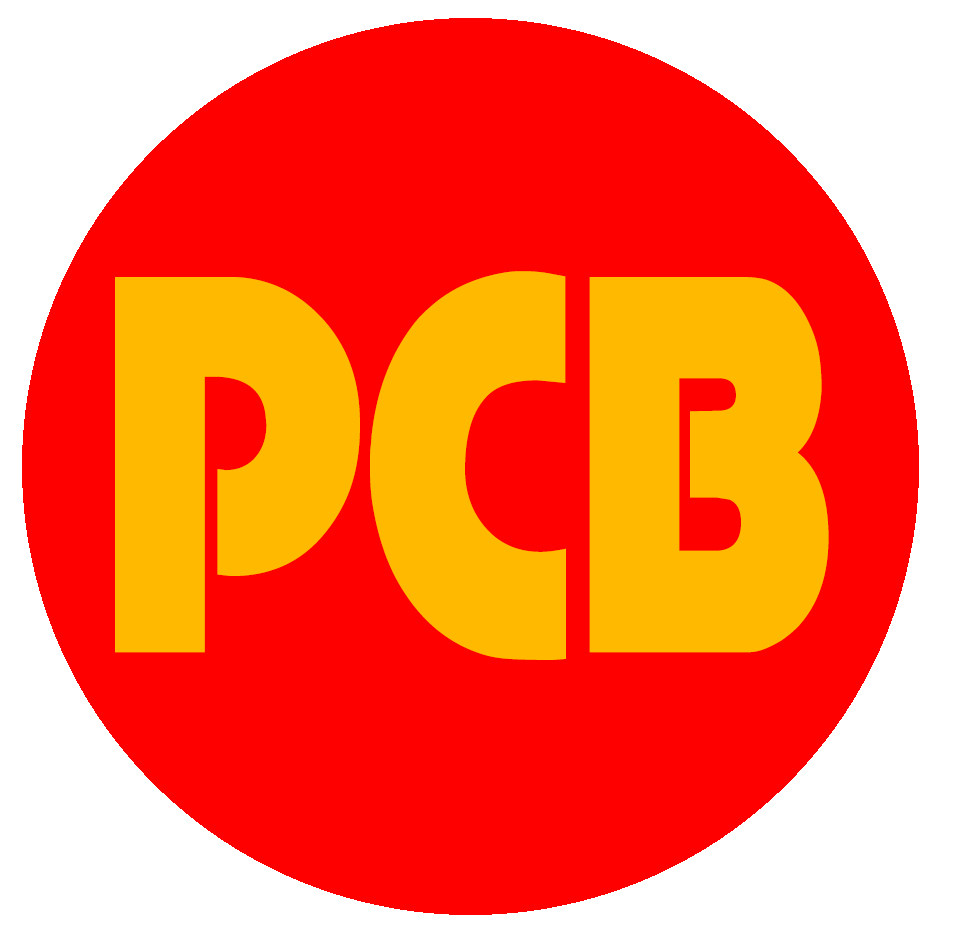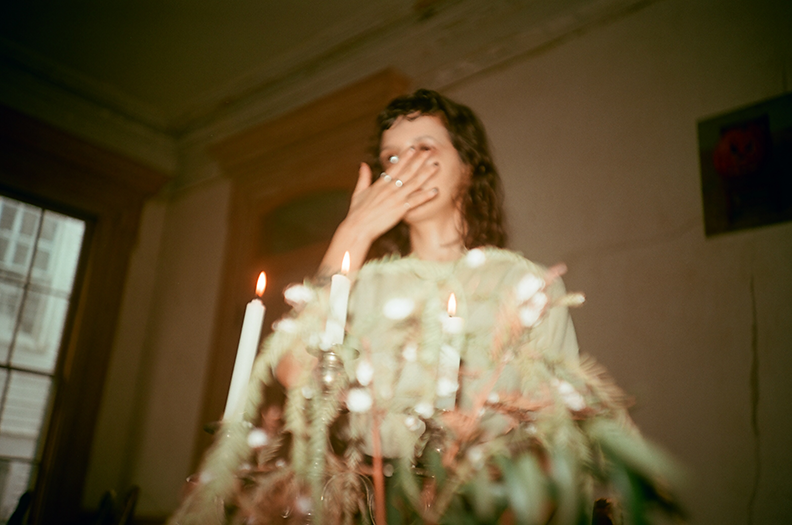By Keith Walsh
Combining the elegance of electronically-generated piano sounds with digital synthesis, Nadia Prupis and her musical scheme Glass Machine conjure up feelings of awe and wonderment. The just-released ‘Box Of Darkness’ is a lovely 8-track set released on Optik Muzak. Inspired initially by another U.S.-based electronic musician, Philip Glass, Glass Machine’s songs build on the mysterious, sometimes magical interaction between human, instrument and machine. (My review of Box Of Darkness is at Synthbeat.com.)
Popular Culture Beat: I hear lots of piano like-sounds in your music. What about the acoustic piano attracts you?
Nadia Prupis of Glass Machine: Acoustic piano to me has this really intoxicating quality to its sound and presence, which I think comes from both the tactile elements like chord layering, but also from just how evocative and rhythmic and immersive it is experientially. I find that the loop-based and minimalist styles I’m drawn to in a lot of music — and actually other art forms as well – render really well on the piano, how the simplest melodies can come across in this way that’s very dreamy-yet-propulsive, like you don’t need to keep up with the song, the song is carrying you forward. If you listen to some of the piano in Blood Orange’s music and Devonté Hynes’ film scores, or Park Hye Jin’s track “Call Me,” or Aphex Twin’s piano-centric pieces, or Philip Glass who I partially named myself after, a lot of their work is really emblematic of that feeling to me.
Popular Culture Beat: What is your musical education and what instruments?
Nadia Prupis of Glass Machine: I played piano from about six to 12 years old, then stopped for a much longer time. And then I didn’t start playing again until I was in my early 20’s. Which at first, for many years, was just me teaching myself on a cheap keyboard, with no thought of turning into any kind of project. But over time, and this peaked during quarantine because it was such a central ritual throughout that period, it just came to take up more and more space in my life until it was all I could focus on. Also, in 2021, I was so lucky to reconnect with my friend Kafari, an incredibly talented, classically-trained pianist and beat-maker, and he generously showed me the fundamentals of Ableton enough that I was able to download it and write a little 12-minute EP sort of thing on there during the free trial period. And that was how the whole project got started. So my training and education are pretty choppy, but piano has been in my life since the beginning.
Popular Culture Beat: I’m getting Harold Budd and Brian Eno vibes for sure. In addition to these, are fantasy films or novels among your influences? What concepts or images in your head get you started to compose these pieces?
Nadia Prupis of Glass Machine: It is very very generous of you to make these comparisons! I wouldn’t say I’m influenced by fantasy films per se, but I definitely see where some themes could overlap – I get inspired a lot by esoteric subject matter like the occult, psychic power, dreams, intuition, tarot, dimensional portals, and these other sort of mystical subjects and aesthetics. So those themes I think can show up in fantasy and sci-fi, even if I’m not directly influenced by those genres. I would say for me it comes more from a place of invoking the feminine, of trying to find this balance between soothing and tense, or dreamy and noisy.
In terms of literature, I love lyric essay and experimental fiction, works that use poetic and unconventional language and spiral forms to construct these narratives that are materially fragmented and sensory, but still entirely lucid and cohesive. Anne Carson and Maggie Nelson are two writers I’m sort of never not thinking about. Which, in reference to what I was saying about being drawn to loops and minimalism in music, those types of genre-defying texts feel like a literary analog of that same concept, that pattern-based structure and aesthetic and cyclic motion. And actually, the title of the album, Box of Darkness, is paraphrasing the Mary Oliver poem The Uses of Sorrow. So although the literary impact is there, it’s not quite from the standard novel, but rather late-20th-century avant-garde and modern feminist movements.
I would also say because this project happened so unintentionally, it’s still in a very exploratory phase, and I think will take a lot more experimentation, both with overall sound and specific equipment, before I feel like it really represents everything I’m going for. In my head it’s much more electronic. In my head it has vocals!
Popular Culture Beat: Please tell me about your gear, DAW, favorite synths and effects. Are you mostly in the box or hardware based?
Nadia Prupis of Glass Machine: Right now, I’m still pretty in-the-box, having initially learned just through my friends being generous with their Ableton knowledge and also maybe their software burning skills… I like to return to certain elements to create more of a cohesive sonic narrative, so I will often use Swell Pad just to set a subtle, ambient atmosphere. And a drum rack with a minimal selection of the 808 and 606 drums for really simple beats. From there, I like to feel out what the song is calling for, what kind of additional minimalist effects that, again, are meant to reference more prototypical, lo-fi tools and sounds.
And actually, I’m so inspired by Sara’s sound that I literally just today obtained a Korg Volca sampler, which is one of her central pieces of equipment, and I think will be a big step in mine. (Prupis is referring to Sara Storm of Nail Club and Latex Cop). I would also love to eventually get a real luxury keyboard like a Nord or Roland stage piano, but the quality of equipment right now feels incidental to the direction of the project. Overall, I’m trying to let the setup present itself through attention and experience.
Popular Culture Beat: Please tell me about your workflow? From concept to final product ….
Nadia Prupis of Glass Machine: My workflow depends on what I’m trying to accomplish. If I have a specific project, it does require consistent, managed sessions where I sit down at the keyboard and record something, a verse or even just a little hook, start experimenting with effects, and go from there. Usually I have a few specific things I’m trying to create – a certain counterpoint pattern, a flourish I’m trying to build up to. So as I start constructing these little fragments of songs, it gets easier to link them to broader concepts and start threading the pieces together.
If I’m not working on a project or a deadline, my workflow is a bit more manic. Sometimes I’ll use that time to practice scales or try to learn some new sheet music, and that will inadvertently lead me to an idea. Sometimes I’ll hear a faint little melodic blip in my head and will go over to my keyboard to try and figure it out and then twelve hours have passed. Sometimes nothing happens. But just sitting down with the instrument at least maintains that line of dialogue.
Popular Culture Beat: In the tradition of jazz interpretation, there’s a sense of not hitting melodies and chords on the nose. Is this due to the use of arpeggiators and sequencers? How much are you using the random mode in the arpeggiator?
Nadia Prupis of Glass Machine: There are some arpeggiators in a few tracks! “Chaos Garden” is the one where you can really hear them – and that sequence is literally the sound of me figuring out how to use an arpeggiator in random mode. I liked the result so I looped it and reused it. Outside of that, I’m a little too picky with details to rely on randomization, but I still like to create space for those features that are so foundational in noise. I’m honored that you would hear a jazz influence in there — for me, because I’m in the ambient and noise spaces and am so inspired by artists in that lineage, and also because I see myself as an amateur and I like to embrace that rather than try to fix it, that’s where some of the less-melodic elements really come from. It’s me trying to feature the imperfections and raise the tension and intentionally incorporate wrongness.
Popular Culture Beat: Is it factual that the first EP (Metasynthesis) features an acoustic piano but the second is an electronic (for the most part?) How did you mic up the piano?
Nadia Prupis of Glass Machine: Both electronic! But I used the Upright Piano plugin, so ~sounds~ acoustic. Actually, for the EP, because I was still so new to Ableton, the way I wrote the piano sections was by going into the composition view and literally manually clicking every note into place for every song. Very silly, but if it works, it works.
Popular Culture Beat: How much of the piano work is improvised and how much is written out? It sounds like you’re using a technique of limited modes or scales to improvise?
Nadia Prupis of Glass Machine: That’s a very efficient way of putting all my rambling! I would say that by the time I’m recording — or clicking — I have everything more or less written out, with some room for adjustment. But improvising with limited scales and arpeggios is a huge part of the whole “just sit down and do something” process.
Popular Culture Beat: Have you played live in any projects, and what do you think about playing live with Glass Machine?
Nadia Prupis of Glass Machine: I’ve played live as Glass Machine for a couple years now. It’s obviously really special to be able to share my music with an audience, but I also have stage fright, so the performance element is a whole other skill that needs active practice. The only other live playing I’ve done outside of my own music has been during this amazing noise fest called Analog Sacrifice that my friend Zona, who runs Computer Age Recordings, has put on for the past two years in Brooklyn. This past year it started off with this experimental night where some of the musicians were paired up randomly with each other and a poet and would improvise the backing track to them reading their work. Zona and I played with Katie Ebbitt, whose writing is so fertile and perverse and haunting, and so we ended up creating this kind of high-pitched, tense soundtrack that felt very organic the way a rotting piece of fruit is organic, but in a good way. It was a very freaky collaboration that I absolutely loved. In a lot of ways I was more comfortable doing this kind of responsive improvisation than I ever have playing my own music. You can feel the unspoken communication happening in the moment, and that’s thrilling.
‘Box Of Darkness’ by Glass Machine On Bandcamp
‘Metasynthesis’ by Glass Machine On Bandcamp
Optik Muzak On Bandcamp
Nadia Prupis On Instagram
‘Box Of Darkness’ Review At Synthbeat
finis

